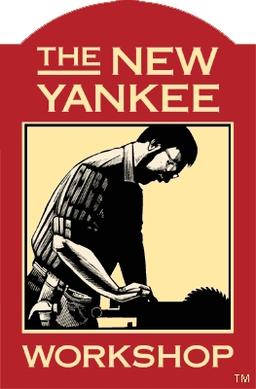I have very very old power tools. I cannot afford new ones. The problem is, if I’m being totally honest, I’m largely afraid of the tools I have. I’d like to get over this. How does one do that without direct supervision?
More info: I inherited tools from my parents and grandparents. Things I could afford to replace, like drills and drivers, I did. What I have left are big bladed things (chop saw, table saw, tile saw, etc. no lathe sadly :( ) None of the users of these specific tools are still alive. They are all probably 30+ years old, and work fine, probably, but… are just super intimidating (tho my grandfather had a lot of pre-electrification manual tools and I love those - So nice to take a manual plane to a solid door and end up with something that closes properly!). Some of them have plugs that screw together so you can repair them and everything (those I probably won’t use, absolutely terrifying if you fuck up). I’m mid 30s so I remember most of these things being used but I also remember the table saw I have in my garage taking off half my step-dads thumb…
I know power tools today are built to be a lot safer, but I definitely can’t afford those (I wouldn’t even be able to afford these but they were free for me), and I don’t know anyone with power tool skills (last learning I got was in hs shop class almost 20 years back) so how do I get comfortable with them enough to actually use them for the little projects I need them for? I don’t live in a big metro area, so there aren’t clubs afaik.
Fear is good, so long as you can convert it into respect for them. As soon as you lose the respect, they WILL bite you.
Never fear danger, but always respect it.
Safety features haven’t changed that much on major power tools in a long time, with the exception of stop saw. Don’t necessarily think old tools are inherently less safe, but let that fear of spinning blades cultivate respect for what they can do. At the end of the day, it’s all about keeping your fingers and body out of the blade path. This can be done with a mix of technique and some very basic tools.
Chop saw
- Does yours have a blade guard that retracts as the saw moves up and down? That’s the only safety innovation on these that I know about
- Keep your fingers away from the saw bed and fence
- Don’t hold your work piece to the saw fence with your hand, use a clamp
- Don’t hold your work piece to the bed of the saw if it’s too long and falling over. You can either build/buy a stand or use an outfeed type table if the saw is on say the end of a counter/bench
Table saw kick back
- Do does yours have a Riving knife? If yes, good. If no, does it have provisions for one? Go buy one and install it pronto. Riving knives prevent kickback, which occurs when the far side of the blade (spinning up) catches/lifts the wood you’re cutting. This can result in one of two things: you reach for the wood that’s lifting and put your finger in the blade path and/or the wood lifts, the blade catches it, and the piece of wood gets thrown in your ganeral direction
- if possible, stand off-center to the piece of wood you’re cutting so it can’t hit you if it does kick back
- If you see the wood lifting, then the saw off then think
Table saw other ideas
- Use push blocks and/or push sticks. These don’t have to be fancy and you can absolutely make your own out of a piece of wood. I would personally avoid blocks or sticks that only rely on friction. The last thing you want is for one to slip and put your hand (or body) in the blade path
- Speaking of bodies, do not lean over the table saw! You don’t want to slip and fall into the blade
- If you have a fence and are ripping narrow pieces of wood, use a featherboard to keep the wood against the fence
- Buy or make a cross cut sled. This will make your cuts more consistent and keep your fingers out of the way
- Speaking of sleds, table saw jigs are your friend if you’re making repetitive cuts
I’ve been through this so I know how you feel. Here’s what I did with an old router table I inherited. I knew nothing about router tables at all when I got it. I didn’t even know how to set it up or use it. First I watched a safety video about it, and then a longer one about setting it up for use. I got my hands on it and became familiar with the parts while watching the videos. Then once I was aware of how the parts worked together I did a very careful test cut. It worked! And now I had just enough understanding to know which parts I needed, which parts were for safety, and I could now see potential problems like if something is too rusty or not spinning smooth.
Just take it one step at a time is all I’m trying to impress on you. It’s not rocket science- you will figure it out. I’m sure you can still find replacement parts for anything broken or sharpen things or lubricate them.
Thank you for this. I’m sure replacement parts for some of it are still around, and I know they take standard modern blades, so that’s a good start. I have to assume there should be some sort of identification label somewhere on any power tool, right? Especially older ones built more to last? Cuz I’m not even sure what tools I have, or what sizes they take/need.
I suppose I sort of used that strategy to learn to use the embroidery sewing machine I inherited as well. It’s way overkill for basic repairs, but you have to know how to use it to use it for the basics, so that makes sense. I tried to skip from “how to thread the machine” to pick a stitch and fix a thing, and I had a bad time because I didn’t know what I needed to know. And I probably want to avoid that kind of mistake this time. Higher stakes and all.
A few things:
- Look up the appropriate safety equipment and use it. Eye and ear protection at a bare minimum. Power tools are loud, get a nice set of earmuffs so that you’re not startled every time you turn them on. Gloves… there are cases where not having gloves is safer, eg around drills where you can be caught up. Long sleeve shirts should have the sleeves buttoned or rolled up, jewellery should be removed, long hair should be tied up and under a hat.
- Clamps and big tables/base plates. Don’t be afraid to clamp whatever you’re working on down tight to something big and sturdy. It gives you the opportunity to use two hands on the tools.
- Always get in the habit of unplugging power tools when working on them. If your drills and what-not need a spanner or chuck key to change blades or bits, cable tie the tool you need to the power cable just behind the plug. It forces you to unplug it when working on it.
- Finally, look at getting an inline, foot operated safety switch. It’s like an extension cord with the switch in the middle. Nothing works until your foot is on the switch. Use that with your tools if you don’t feel confident, and especially on older tools where switch interlocks and etc weren’t that great.
Once you’ve got all that, practice. Things are a lot less intimidating when you’re working with things that are clamped down, with good safety gear, and everything is controlled.
All the other comments on getting comfortable with the physical operation are apt, so what I’ll add is that with old power tools, a possible concern is with electrical safety. If you’re capable with electrics, you might partially take apart the machines to verify that things are in working order. As in, no frayed or loose wires, grounding continuity exists, safety circuits are intact, etc.
And when you’re using such equipment, making sure you’re using a properly-sized extension cord (eg 12 AWG or 4 mm^2) and a GFCI-protected outlet.
One thing that’s helped me a bit in similar circumstances was to find the manual (by searching on-line, since the paper ones don’t tend to survive in our household). Even 30-50 years ago, they were pretty good at telling you what to absolutely not do, in order to reduce the number of lawsuits flung at the manufacturer. Also a nice-to-have for maintenance purposes.
(Now if only I could find the one for that damned drill press . . .)
I would also recommend if you are afraid of physical safety (e.g. finger removal) to add shielding or other safety features, and to look up tutorials on safety techniques to avoid hurting yourself (finging the sharp bit). For example, with the tablesaw, instead of feeding the material into the saw by hand, you can set up a fence (bar of wood or metal clamped to the table) that you can slide the material along to align it. Then, push it using a push stick or push block. That keeps your fingers far away from the blade so theres a low chance of hurting yourself.
As for getting comfortable, just start making things. Sounds dumb but the only way to gain experience is to do. Look up videos, make things. Make a bird house, a model plane, a table, a chair, a shelf, etc. Personally I would stick to small things that make use of several techniques to get more confortable with it, to stretch my material, and to avoid taking up a bunch of space with something of low quality while I learn
I recall the insistence on push blocks back in hs; the teacher was missing 2 fingers so that’s totally imprinted on me… that and safety glasses.
But I will absolutely look into shielding and safety tutorials because I am (very, rightly) afraid of losing parts or functions for stupid reasons.
I have a few things I need to do, but they aren’t so much making things as repairing my house (very old and crappy, got cheap years ago, many regrets) which is why I want to get used to using them.
I do have a feeder hanger I want to make, a chicken coop (built in to the garage with a run outside), and a grapeline, I suppose I could use muh tools with scrap (there’s a weird amount of old 4x4s in the garage attic from before me) for most of that. Thanks for the advice!
those 4x4’s are probably better than any wood you can get today
Well now I feel kinda bad wanting to use them for practice garbage…
All depends how long they’ve been there.
Does the wood have smaller and more numerous rings than modern wood?
If not then just go for it.
If so, dollar boards were still a dollar last time I got some.
That was like 3 or 4 years ago though.
You can go to a lumber yard and buy the wood that is not warped or some such in a way that makes it worthless for a lot of things, but you’re just practicing anyway so you can cut around that and have multiple smaller boards
Crazy impractical idea: Reach out to Stumpy Nubs, pitch it to him as an episode idea where you bring the tools to him and he plays with them and teaches you how to work with them and how to approach safety with them.
I do not recommend trying to “figure out” how to work safely with them if you’re that unfamiliar with them. It only takes once. I think that fear is there for a reason.
In addition to some of the other very helpful suggestions in the comments, how about showing us some of your tools? I always like to see what other people are working with. And, maybe someone can provide tips specific to what you have. Not all power tools are created equally and some of them have different features and/or quirks.
In addition to lots of good comments you have already received, I’ll add a couple notes.
Some old tools were designed to let you do some inherently unsafe things. Radial arm saws are one thing that comes to mind. They were designed to be a one stop shop, but really compromised safety to do that. If you have one, do some reading or watch some videos of modern woodworkers on what you can actually safely do with them.
Another thing to look out for is that old tools can sometimes have a lot of vibration. As things get older, bearings wear down, and screws/bolts can loosen. If you notice a lot of vibration, you can go around the tool to try and find anything loose. Many tools have a lot of adjustment points to ensure things are well balanced. If you are really handy, you can also replace bearings. Another trick I used with an old contractor saw was placing weights on the shelf under the body of the saw. Generally, more mass is less vibration; that’s why cabinet saws weigh so much.
Really, if I were you, I would just post pictures of what you have to this community. That’s a good way to get more specific advice.





